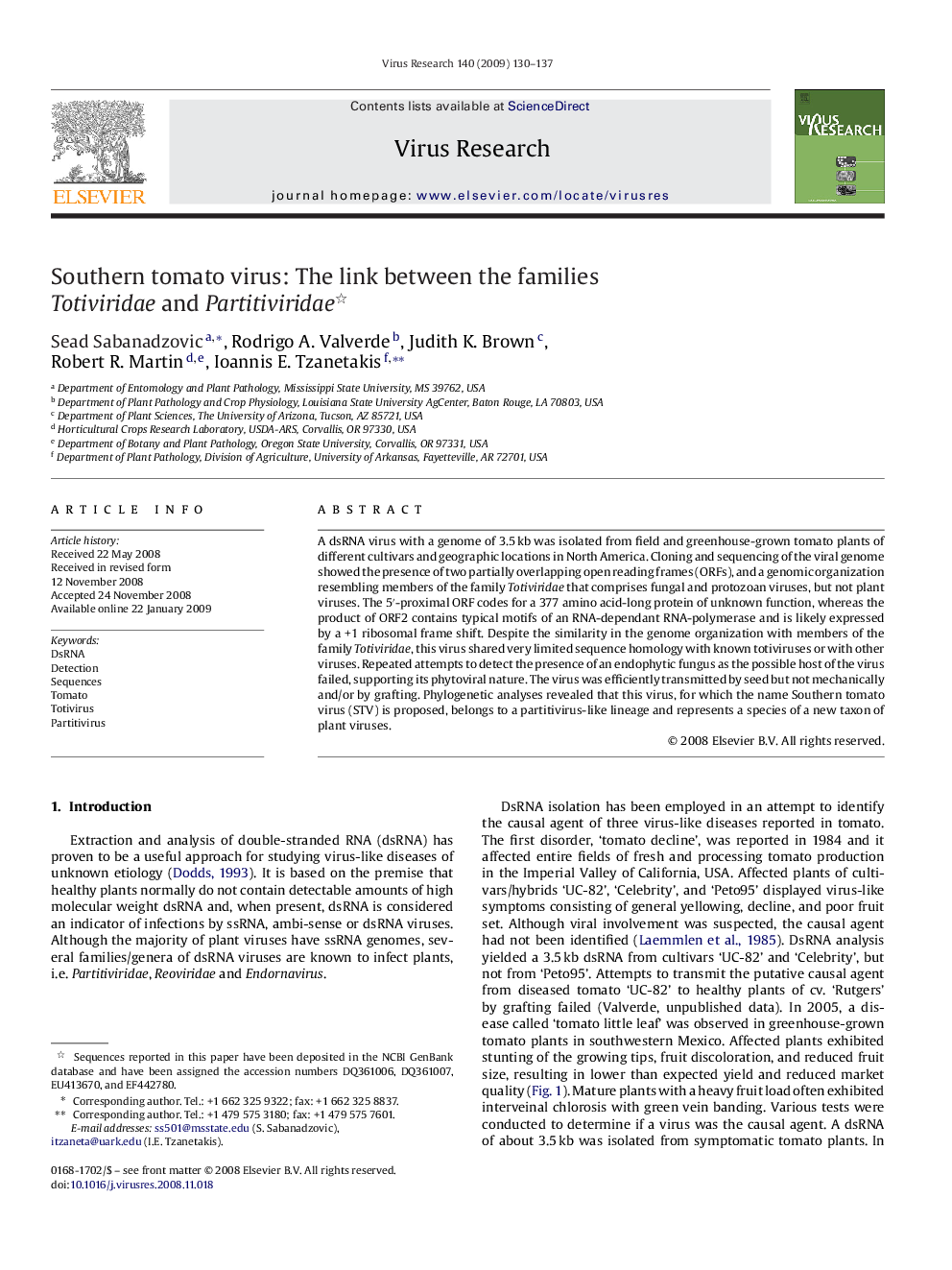| Article ID | Journal | Published Year | Pages | File Type |
|---|---|---|---|---|
| 3429935 | Virus Research | 2009 | 8 Pages |
A dsRNA virus with a genome of 3.5 kb was isolated from field and greenhouse-grown tomato plants of different cultivars and geographic locations in North America. Cloning and sequencing of the viral genome showed the presence of two partially overlapping open reading frames (ORFs), and a genomic organization resembling members of the family Totiviridae that comprises fungal and protozoan viruses, but not plant viruses. The 5′-proximal ORF codes for a 377 amino acid-long protein of unknown function, whereas the product of ORF2 contains typical motifs of an RNA-dependant RNA-polymerase and is likely expressed by a +1 ribosomal frame shift. Despite the similarity in the genome organization with members of the family Totiviridae, this virus shared very limited sequence homology with known totiviruses or with other viruses. Repeated attempts to detect the presence of an endophytic fungus as the possible host of the virus failed, supporting its phytoviral nature. The virus was efficiently transmitted by seed but not mechanically and/or by grafting. Phylogenetic analyses revealed that this virus, for which the name Southern tomato virus (STV) is proposed, belongs to a partitivirus-like lineage and represents a species of a new taxon of plant viruses.
